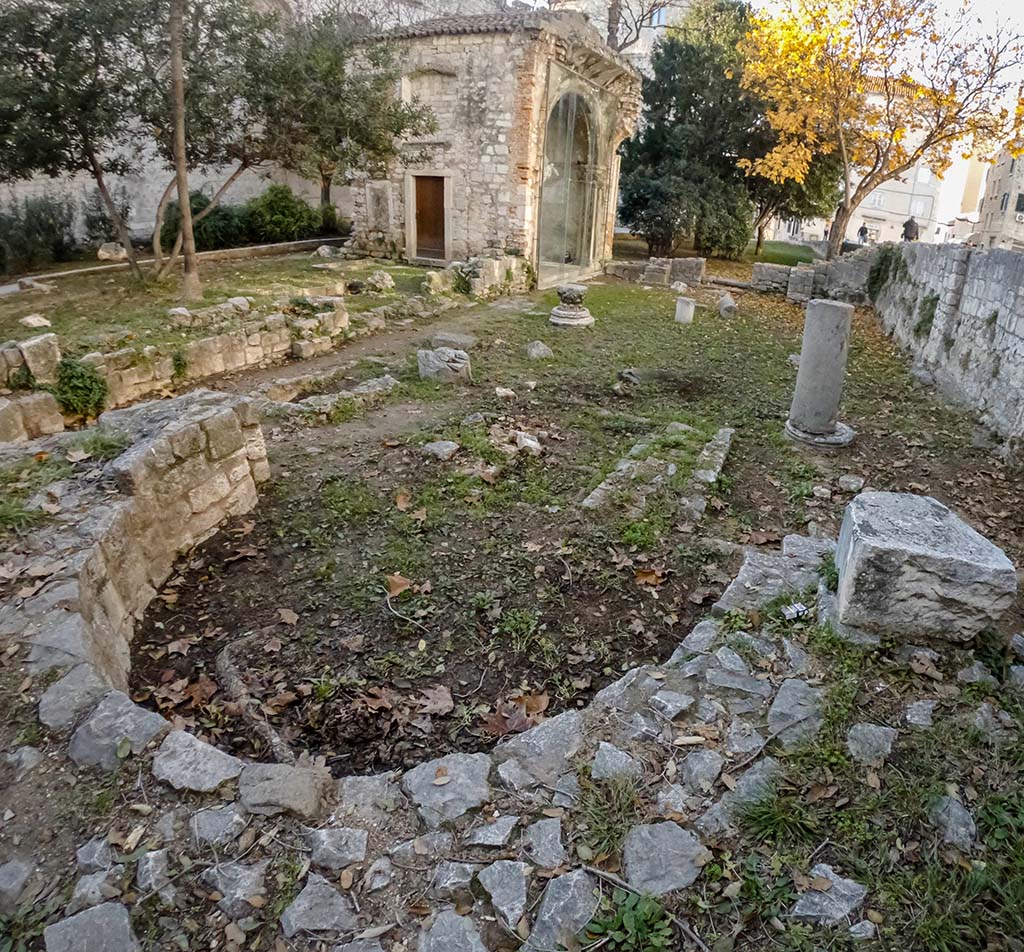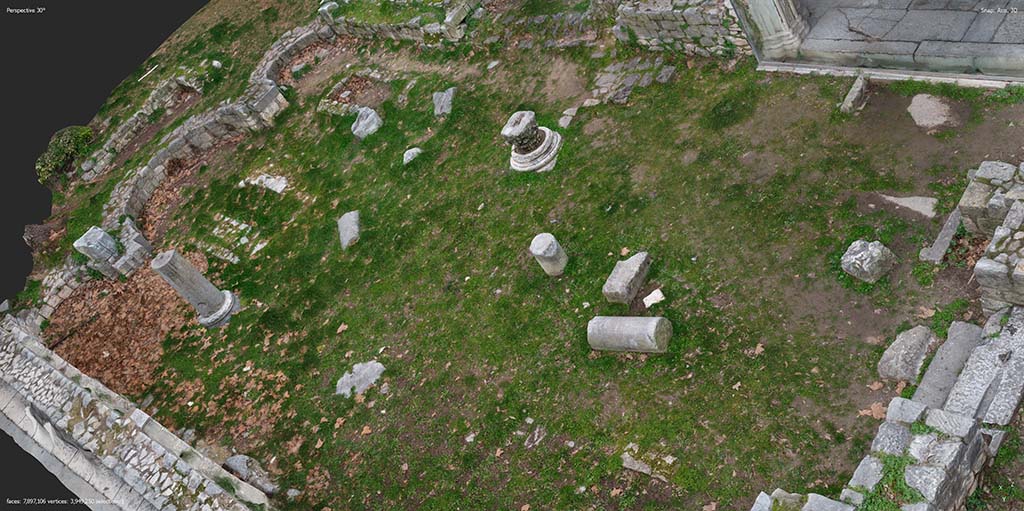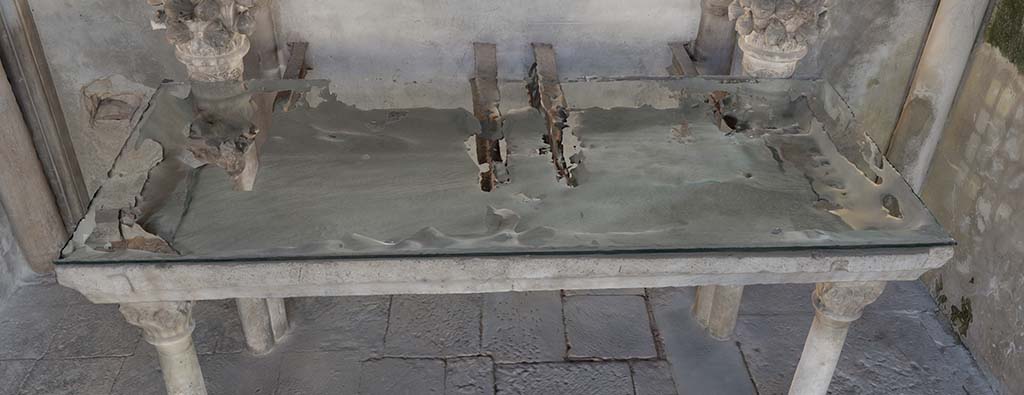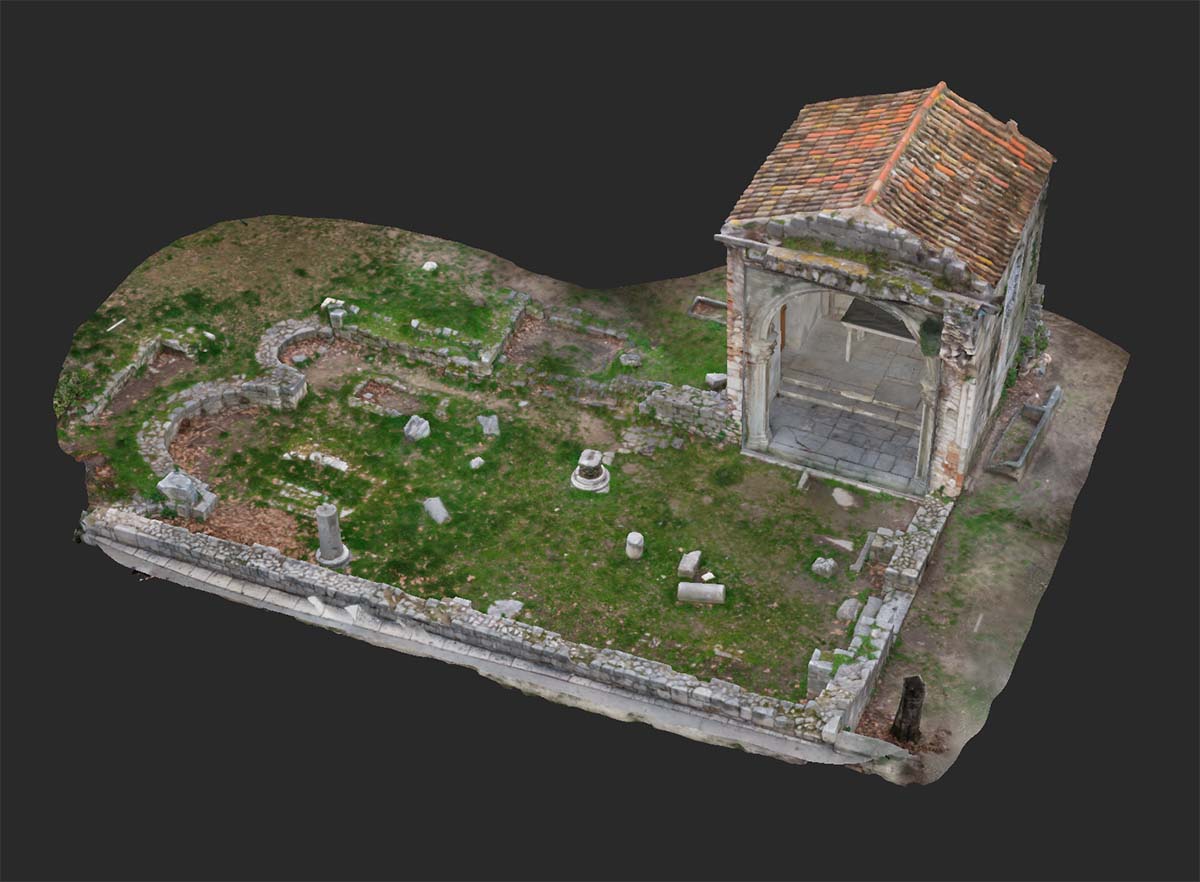About the Benedictine Monastery of St. Eufemije in Split
We have created a 3D photogrammetric model depicting the eleventh-century Benedictine Monastery of St. Eufemije in Split. It was built next to the walls of the palace and the church of St. Euphemije in 1069. Eight centuries later, the monastery burned down. Although the ruins are still in the center of Split, they are easy to overlook. Because what is left of the monastery are mainly small stone structures among the grass, next to a small park. The only thing that catches the eye from a distance is the small glazed chapel of Blessed Armir, Archbishop of Split from the twelfth century. Inside, there is an altar with a bas-relief from 1444, whose author was Juraj Dalmatinac. (source: visitsplit.com)

How the model of the Benedictine monastery of St. Eufemije in Split was created
Creating this model required a large number of photographs inside and outside the chapel, as well as photos of the entire area from the air. Therefore, we divided the work into several stages.
First, we only operated outside and focussed on aerial photography. For this purpose, we used a small drone (DJI Mini 2), which had to be flown very carefully to prevent it from crashing into trees and buildings around. Once we had all the required photos from above, we switched to ground level photography. Using an SLR camera, we took additional hundreds of photos. We photographed the remains of walls and columns, as well as the chapel itself from every possible side. With so much data collected in one day, we didn’t want to shoot inside. We needed to first process what we already had to see exactly what we were still missing.

Problem with scanning the glass
Just as we suspected, we managed to reproduce the entire area very well, as well as most of the building, and the only problem was the glass. Glass and other transparent surfaces are generally very difficult to scan. This is because computer programs for processing photogrammetry are not able to distinguish what in the photo is actually the object being scanned, what is its background, and what is only a reflection of another object. Therefore, transparency and reflections cause errors, which result in models becoming less detailed and deformed. This is exactly what happened in our case with everything that was behind the glass.

Scanning the inside of the chapel of Blessed Armir
Therefore, the second time we focused only on shooting inside. From the nearby Museum of Fine Arts in Split, we got the key to the chapel and entered there with two cameras – an SLR and a compact one. We took another few hundred photos of all the details that were within our reach from the ground level. We were also alble to plan how to approach shooting the bas-relief next time, which is quite high and requires photos taken at several levels, including some from above.There was also another complication – another piece of glass, this time on the altar.
So, after processing the photos we had two problems. The first was a deformed surface of the altar caused by the glass.

And the second was a hole under the ceiling. Since all the photos had been taken from the floor level, there was not enough information for the software to model the area behind the bas-relief.

Photogrammetry with a selfie stick
So the third time we brought a GoPro 7 camera on a three-meter stick to take pictures of the top of the bas-relief and behind it. Also, the museum helped us cover the glass on the altar, so we could photograph it again. Finally, we had everything we needed to create a full three-dimensional model (see below).
Our model of the Benedictine Monastery of St. Eufemije in Split
This model is also available as a 4K video on our youtube channel.
Our video demonstrating the 3D model of the Benedictine Monastery of St. Eufemije in Split
If you like this model, share it on social networks. And if you need a 3D model of any object on land or under water, then contact us.
We would like to thank the City of Split and the Museum of Fine Arts in Split for supporting this project.

